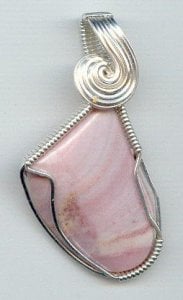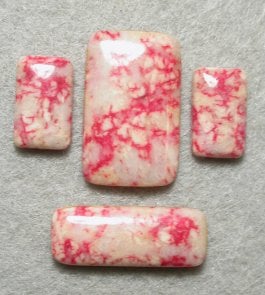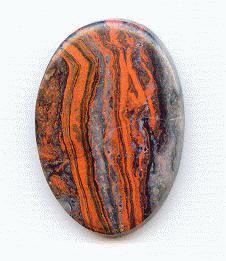Hi,
I''m new to this forum, and I have a question that I hope someone will be able to help me with. I have a couple of pieces of material that I was told is "cinnabar opal". It appears to be common white opal with pink streaks where it was stained by cinnabar. Now, when I do a search for cinnabar opal, I am told it is called Myrickite or Opalite. I have a piece of Myrickite and it looks nothing like the cinnabar opal. When I googled Opalite, I find it is also called Tiffany stone. I also have a piece of Tiffany stone, and again, it looks nothing like the cinnabar opal.
I am still trying to figure out how to post pictures, but I''ve attached a picture of the ''cinnabar opal''.
britesea

I''m new to this forum, and I have a question that I hope someone will be able to help me with. I have a couple of pieces of material that I was told is "cinnabar opal". It appears to be common white opal with pink streaks where it was stained by cinnabar. Now, when I do a search for cinnabar opal, I am told it is called Myrickite or Opalite. I have a piece of Myrickite and it looks nothing like the cinnabar opal. When I googled Opalite, I find it is also called Tiffany stone. I also have a piece of Tiffany stone, and again, it looks nothing like the cinnabar opal.
I am still trying to figure out how to post pictures, but I''ve attached a picture of the ''cinnabar opal''.
britesea







300x240.png)